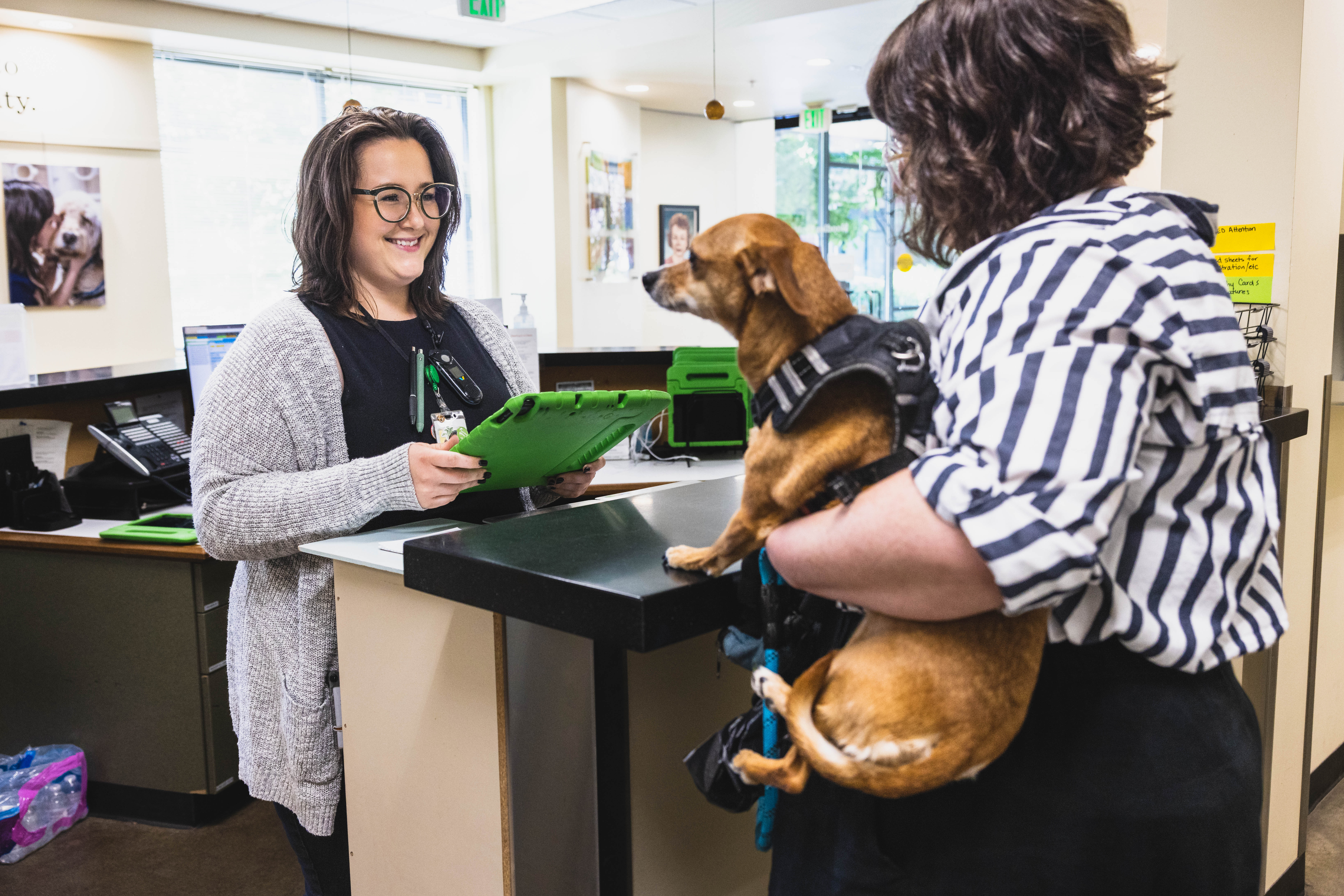Confrontational Clients in Veterinary Medicine

As a 24-hour ER facility, we have clients who call and come in worried, upset, nervous, pissed, and frantic. The emotions can run the gamut and sometimes bring a client to behave in an aggressive and confrontational manner. The goals when dealing with these clients are to defuse the situation, focus on the pet, and keep everyone safe. Here are a few tips we use when training new staff members about dealing with difficult clients:
Self-awareness
Manage yourself, and then manage the situation at hand. Each individual needs to keep their emotions in check and know what triggers them. The fact is in this field you are going to get yelled at, cried to, and be forced to deal with a rainbow of reactions and emotions from clients. If you can’t handle it with grace and professionalism you are in the wrong line of work. Several years ago I worked with a receptionist who could not handle being yelled at. She would become rude and shut down because she believed, “They shouldn’t yell at me.” It’s true they shouldn’t yell, but once it happens how are you going to deal with the situation? If your first inclination is to yell back, you’re not helping the situation. You’re only making it worse. Self-awareness can’t be taught but it can be practiced. When we bring a new member of the team on we always discuss real-life circumstances that have occurred in the past. We strive to arm the new hire with tricks and tips for handling confrontational clients.
Stay empathetic
We never know what the client experienced before calling or coming through our doors. Keep the focus on the care of the pet and what you can do for the client. Even if the client is behaving absolutely dreadfully, bringing the animal back into the conversation can help refocus the client. The health of the pet is the reason everyone is here (client and staff) and by bringing the attention back to the care of the pet we shift the focus to what matters. A few years ago we had a client who yelled and screamed at the time of deposit as their pet was being admitted to the hospital due to the cost. In that moment she was very unpleasant and the team did the best they could to calm her down. When she came back the next day to visit her pet in hospital she apologized to the staff and asked that they pass on the apology to the staff from the night before. She explained that her pet’s stay with us was just one more stressor in her life but that she should not have yelled at anyone as she knew we were being helpful.
Know your resources
Who’s your backup if a situation gets out of control? Is everyone trained on how to alert others in the hospital that there is a problem? Occasionally another team member is needed to help with a situation, or even the police might be needed. We have an overheard page system in place to alert everyone working in the hospital that a situation has turned for the worse and help is needed either in the form of additional staff or (rarely) from the police. All staff members are trained on safety protocol and a quiz is mandatory to help the information stick. We keep the police non-emergency number handy in case it is needed, as opposed to 911. We also have the number to a local mental health organization that can help triage a client over the phone and talk them down from their emotional perch. If need be, they can come down to the hospital and assess the individual in-person to see if additional assistance is required. We once had a grief-stricken client who threatened harm to herself after the loss of a pet and the mental health organization came down to help her get the care she needed. The client came back to visit the hospital several months later and share photos of her dog who had passed, as well as thanked everyone for their kindness.
Talk about it
Make sure every team member working knows there is an issue. No one should ever walk into an exam room with a volatile client without having knowledge that the client is upset. The team must communicate in that moment with each other to insure the client gets the best service and that everyone stays safe. It is also important for the team to communicate because the client may have offered little bits of different information to different staff members that could change how to best proceed with the client.
Then talk about it again after the dust has settled
Every situation offers a learning opportunity not only for the team members dealing with a given situation but also for those not involved. Share the situation with the staff and talk with them about what went well, what could have been done better and what protocols need to be updated to improve the outcome in a like situation. The idea of reviewing the situation is to allow everyone to imagine themselves in the scenario and review how they would have handled it, as well as offer an outlet for the team involved to de-compress.


